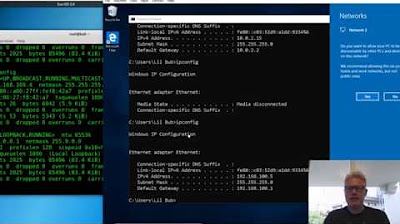Making feedback easy for leaders with the Feedback Frame tool
Summary
TLDRThe speaker introduces a structured four-step feedback process to prevent the 'machine gun effect' in communication. It starts by acknowledging what the employee is doing well, moves to identifying areas for development with a focus on improvement, then seeks to understand their decision-making process, and concludes with a discussion on potential improvements. The method is illustrated using a humorous Scooby-Doo example, emphasizing the importance of preparation and clarity in feedback to foster growth and avoid defensive reactions.
Takeaways
- 📋 The speaker introduces a four-step feedback process to prevent the 'machine gun effect' where feedback becomes overwhelming.
- 👍 Step one focuses on acknowledging what the employee is doing well to set a positive tone for the feedback session.
- 🔍 Step two involves identifying developmental needs, which are areas that are not yet working effectively, with an emphasis on the word 'yet' to indicate potential for improvement.
- 🤔 Step three asks for clarification on the employee's decision-making process, aiming to understand the reasoning behind their actions.
- 🚀 Step four discusses potential improvements and what could be possible with different actions, promoting a forward-looking perspective.
- 🍔 The 'sandwich effect' is mentioned as a contrast, where feedback is traditionally given between two positives, but the speaker advocates for a more direct approach.
- 🧠 The importance of structuring feedback is emphasized to soothe the ego and make the recipient more receptive to the message.
- 🎭 An example using the character Velma from Scooby-Doo is given to illustrate how to apply the four-step process in a humorous way.
- 🛠 The speaker suggests practicing the feedback process with public figures or characters to get comfortable with the method before using it in real-life situations.
- 📝 The speaker recommends writing down the feedback points or keeping the four-step template in front of you to stay focused during the conversation.
- 🤝 The overall goal of the feedback process is to improve communication and foster growth, making it a valuable tool for both managers and employees.
Q & A
What is the 'machine gun effect' mentioned in the transcript?
-The 'machine gun effect' refers to the situation where someone starts giving feedback on one issue and then, without structure, starts bringing up multiple other issues one after another, overwhelming the recipient and potentially triggering a defensive reaction.
What is the purpose of the four-step box method for giving feedback?
-The four-step box method is designed to provide a structured approach to giving feedback that soothes the ego by letting the recipient know what's coming, thus reducing defensiveness and increasing the likelihood of constructive dialogue.
What does the first step of the four-step box method involve?
-The first step involves acknowledging what the employee is doing well, focusing on what is working or helping, without using the 'sandwich effect' of positive-negative-positive feedback.
What is the 'sandwich effect' in feedback?
-The 'sandwich effect' is a feedback technique where positive feedback is given first, followed by the negative points, and then ending with another positive point, which can sometimes come across as insincere or manipulative.
What is the significance of using the word 'yet' in step two of the feedback process?
-Using 'yet' implies that the issue being addressed is not a permanent state but something that can be improved upon, indicating progress and potential for change.
What is the purpose of step three in the feedback process?
-Step three, 'Help me understand,' is about asking questions to gain insight into the employee's decision-making process, choices, or business discipline that led to the situation being discussed.
How does step four of the feedback process differ from the previous steps?
-Step four, 'Discuss what's possible,' shifts the focus from the problem to potential solutions, discussing how taking different actions could lead to better outcomes and what fluency in the desired behavior looks like.
What is an example given in the transcript to illustrate the four-step box method?
-The example given involves Velma from Scooby-Doo, where her intelligence and catchphrase are praised, her issue with losing her glasses during crucial moments is addressed, and potential solutions like Lasik or contact lenses are discussed.
How can practicing the four-step box method with fictional characters help in real-life situations?
-Practicing with fictional characters allows one to apply the method in a low-stakes environment, helping to refine the approach and make it more natural when used in real-life, high-stakes feedback situations.
What is the importance of having a template like the four-step box method when giving feedback?
-A template helps to ensure that feedback is delivered in a structured and thoughtful manner, preventing the conversation from wandering and ensuring that the recipient understands the purpose and focus of the feedback.
How can the four-step box method be applied to a situation where an employee is not effectively budgeting their time on projects?
-By using the method, one can first acknowledge the employee's strengths, then address the issue of time mismanagement, ask about their decision-making process, and finally discuss how better resource allocation could improve their performance and project outcomes.
Outlines

This section is available to paid users only. Please upgrade to access this part.
Upgrade NowMindmap

This section is available to paid users only. Please upgrade to access this part.
Upgrade NowKeywords

This section is available to paid users only. Please upgrade to access this part.
Upgrade NowHighlights

This section is available to paid users only. Please upgrade to access this part.
Upgrade NowTranscripts

This section is available to paid users only. Please upgrade to access this part.
Upgrade NowBrowse More Related Video

Aristotle Model of Communication | English Lesson 📍

Lasting Longer is EASY when you know THIS...

Cobas U411 | Urine Analyser | Daily Maintenance | Quality Control | How to Run Control

Das Vorbereiten der Kundin zur Trockentechnik

Presentation | Writing Group

How to Make Virtual Machines Talk to Each Other in VirtualBox
5.0 / 5 (0 votes)